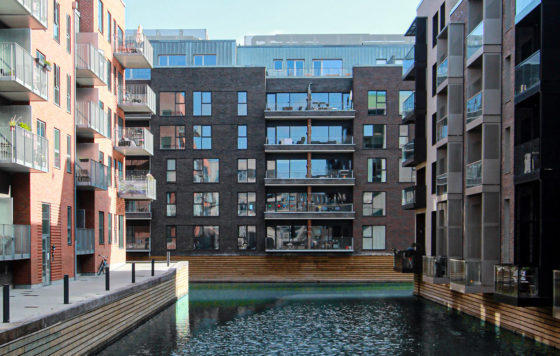Teglporten
The area Teglholmen shares its history with the local brickyard form 1871 which supplied the city with bricks for several years. In the 1970s, the industrial businesses began shutting down and Teglholmen in Copenhagen is now in the midst of transforming from industrial area to an attractive, residential address.
Teglporten’s inspiration comes from Copenhagen’s current block structure from the expansion of the city in the 1800s. Especially Christianshavn and Frederiksstaden (such as Nyhavn) serve as models for the urban cohesion between residential blocks and city space.
Teglporten consists of three different types of brick with great variation. A light, a grey and a red brick strengthen the vertical lines in a horizontal division of the building. This means that the building is perceived as several small buildings installed alongside one another, like in Christianshavn or Nyhavn.
Furthermore, the individuality and particularity of the blocks are visually emphasized by the different heights of the buildings, while partially closed-off balconies also highlight this individuality with glass protection or two types of steel protection that follow the shifts in brick.
The area surrounding the building is developed with the proximity to the water in mind. Teglporten’s location on a corner on the south side of Teglholmen, with water on three sides and a view of both Sluseholmen and Amager Fælled, give it the undisputed best location in the area. A wooden pier with no access for cars is established to provide undisturbed access to the canal for all residents in the neighborhood. The promenade, along with the courtyard and the canals, will provide an optimal space for gatherings and community activities.
Function
Location
Client
Year
Gross Floor Area
Site plan




